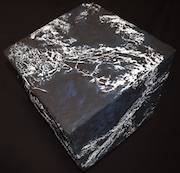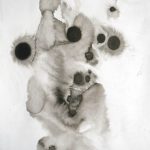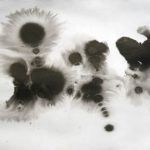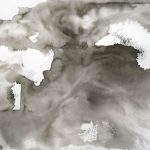Link to published interview in Italian
Dear Robert, many thanks for your kind collaboration. We really need all the stories, memories and anecdotes you will want to share with us. Please, take all the time you need.
Filippo Bordignon
1)“Sunyata” was your first solo album. What are the less obvious musical influences that led you to that recording?
RR: Many of my influences at the time were non-musical, more ethnographic, psychological, or relating to conceptual art (fluxus and minimalism, mostly.) I hoped that my first solo release would make an artistic statement that went beyond musical style, and focused more specifically on states of consciousness. I was playing some very strange improvised experimental music with friends Rick Davies and John Spencer. Our group “Quote Unquote” had rather poor discipline and a weird sense of humor. Those group adventures didn’t reflect my more introverted characteristics. I began exploring very long-form drone and sound environments using the modular synth and layers of cassette tape environments, trying to discover a sort of sonic trance-shamanism. Actual musical influences included: Tibetan ritual music and chanting; Annea Lockwood’s sound environments; the drones that Maryanne Amacher created behind John Cage in their joint piece “Empty Words – Close Up”; Terry Riley’s organ and tape loop performances. Of course the more obvious influences of late-60s psychedelic rock and the ‘70s spacemusic scene had a large role in my vocabulary, but not so much on Sunyata, which was a much more distilled and rarified sort of statement. In reality, my biggest influence came from listening to frogs, birds, rain, insects and breezes.
2)If you close your eyes and think about your first Sleep Concert at Stanford University, 1982, what are your sharper memories?
RR: It was a very humble concert, free to the public, in the lounge of my freshman dormitory, the first time I had ever performed solo with an audience. My only other performance had been an improvised live broadcast on a local radio station with our trio Quote Unquote. I was only 18 years old, and promoted the sleep concert with Xeroxed hand-lettered flyers stapled to bulletin boards and kiosks around campus. About 15 people attended, half of them living upstairs in the dorm. I remember being a bit surprised that anyone showed up at all. I remember quite a few details, such as dragging my synths down from my room on the third floor, along with my stereo system to use as a small PA. I played the dormitory piano at the start, and in the morning. I used an array of homemade bells built from scrap metal and car parts. I played environmental recordings that I had made on two cassette decks, abstract sounds on the homebuilt modular synth, and drones on a Prophet 5 synth, which generally wouldn’t stay in tune. The main challenge was to figure out how to fill 8 hours with sound. I created a chart dividing the night into 90 minute sections to echo the 90 minute REM cycle, with moods and environments inspired by ideas of time (when to play a raga) in classical Indian music.
3)What is the main function of a sleep concert?
RR: I wanted the sleep concerts to encourage people to explore their inner world, in a communal context; to suggest the possibilities of incubation for imaginal, dreamlike, hypnotic or trance experiences by creating a special environment with a sort of mysterious yet subtle and inviting acoustic space. I was hoping it could become a sort of modern shamanic ritual.
4)When did you realize that you had found your style, your musical personality? Do you remember that moment?
RR: It might have been when I recorded the 43 minute piece “Oak Spirits” using a single dissonant chord on the Prophet 5 and a cassette tape of the creek that passed near my grandparent’s house, filtered through tape echo and the modular synth. I was lucky that I remembered to push Record on the second tapedeck to document the improvisation. “Oak Spirits” somehow discovered the place beyond music that I was looking for. It was more like a meditation than a performance. Perhaps the discovery happened a year before that, when I was 17 and began trying to patch the modular in ways that would play itself. I called the results “self determinate synthesis” (a pretentious teenager!) and they sounded like strange animal ocean shapes, or forests on other planets. I would let those patches run for days sometimes, trying to get them to change themselves using stochastic processes or drifting voltages. I still make other-worldly organic noises using similar techniques.
5)Think about your present stance: do you consider yourself a serene man?
RR: Probably “serene” is not my basic nature. I am actually rather restless, and I think most of my friends would say I am a bit nerdy and prone to thinking too much. I am rather self-critical, usually with a bit of “imposter syndrome”, and I struggle to find inspirations for my next projects. Once I get inspired, though, I can work intensely for rather productive stretches of time, in creative bursts. Other times, I can be quite lazy, then start to reprimand myself. If I try to meditate, I usually can’t sit still; but I can walk for hours and I often find walking to be the best form of meditation. These are probably not “serene” behaviors.
6)“Strata” and “Soma” are undoubtedly two masterpieces. What about your collaboration with Steve? What makes these albums so effective?
RR: Thank you. Steve and I are still good friends. In fact we plan to perform together again in December this year. Our personalities are very different, and I think those differences make these two albums somewhat special. Steve can be much more of a juggernaut than I, and I would sometimes choose a slightly subordinate role in order to augment his strong motivations and instincts. He’s an excellent collaborator though, and I find it a pleasure to work quickly and intuitively with him. With those albums, I think we both discovered a new voice within our vocabularies, expressing new dimensions of that shamanic role that music can play. The excitement of discovery makes those recordings special, with Soma becoming a more mature and evolved expression, Strata with more of a raw feeling of exploration.
7)Does the collaboration with Lustmord satisfy you? “Stalker” has been very successful, but it does not seem better than your solo albums.
RR: Stalker was a pleaure to make, and very satisfying both at the time and in retrospect. Brian Williams and I felt that we discovered a fascinating communal landscape. I don’t think either of us feel that it needs to be “better” or compete with anything else that we do. It stands apart as a unique expression. I think we were both a bit surprised at the impact the album had among an audience looking for more intense immersive music. I don’t think either of us viewed the album as “dark” in particular, but I love the mysterious energy it carries with it. I think we succeeded in depicting a surprising and unique world.
8)What is the concept behind “Somnium”, one of your most ambitious albums ever?
RR: I was simply trying to create a sleep concert for everyone, in their homes. In 1996 I traveled around North America to perform over two dozen sleep concerts on local college radio stations. The effort to stay up all nigt for these marathon performances became exhausting, and I wanted to find a format other than live performance to continue the concept. DVDs were just becoming available, and they seemed like a good format to hold very long durations of music. That format turned out to be full of challenges, but years later the idea finds a much better outlet with internet downloads or streaming. It took me several years to pull together the necessary elements to make Somnium work, in the late 1990s, and I am very happy about the reception it still receives.
9)One of your lesser-known musical influences is Maryanne Amacher, a composer still unknown in Italy. What do you appreciate most about Amacher’s musical style?
RR: I loved her approach to sound, the way that clouds of drone could fill a space and inhabit the world between our ears. She composed at a level of pure psychoacoustic phenomena. Maryanne was crazy in the best sense of the word. I had the pleasure of meeting her around 25 years ago at a CCRMA concert at Stanford. She and Naut Humon came to sit with us at the concert and Naut introduced us. (Naut is an old friend from the San Francisco music scene, of Rhythm & Noise, and works a lot with immersive audio.) We chatted for quite a while and I had the chance to tell her how inspired I had been by “Close Up” and by the Sound House installation she created at New Music America (St. Paul MN in 1980.) When she started discussing what she was working on currently, I honestly couldn’t follow her flow of thought. She had such an odd way of using language. Her mind worked on a different dimension. Truly one of the most unusual and inspiring artists of our century.
10)What amazes you most about the aesthetics of the architect Antoni Gaudì?
RR: More than a builder of buildings, Gaudí was a student of nature. He found ways to mirror and emulate the complex mathematical patterns of living things with intuitive techniques, resulting in forms that looked more natural and organically expressive than any other western architect before him. For example, making the intuitive leap of adding weights to strings hanging upside down from the ceiling, with proportional masses to the planned height of towers, then taking a photograph of the resulting arcs, and flipping the photo upside down to define the natural catenary curves that would properly carry the weights of stones in the tower. These unusual natural curves look more like the trunks of trees than any Gothic or Roman arch. This inspires me, knowing that the ideational realm of mathematics underlies and unites the organic world of living form, and that we can communicate and bridge these realms using leaps of holistic thinking and imagination: these aren’t divisions between nature and the built world, or intuition vs. logic, but a common language that unifies life and our maps of experience.
11)There is too much emphasis in the educational system, both abroad and in Europe, on the importance of “using your head”: what’s your point of view?
RR: It’s not a question of “either-or” – intellect vs. emotion. It’s a question of integration and embodiment, incorporating life experience with intellectual curiosity, awareness of environment and our effects upon it, our mortality, aesthetics, humility, balance. I ponder these questions often. For example, my album “The Biode” grew out of questions regarding self and mind, consciousness, sentience, along with the feeling that we should become more aware of the probable sentience of other organisms and complex systems that surround us. This idea might be viewed as completely intellectual, but it comes from the observation that mind extends beyond “head” and even beyond the periphery of each nervous system, to the complex interactions of all the energies and life-forms around us. “Using your head” might involve using all the layers of experience to synthesize new awareness. Let’s try to integrate the many levels of conscious awareness.
12)What is Robert Rich’s conception of ambient?
RR: If by “ambient” you mean a musical style, I don’t think much about it. I don’t think in categories like this. Technically “ambience” means background, and I hope that most of my music can do more than just to perfume the room – I try to make immersive, psychoactive, energizing and inviting experiences that reward active listening. The music I make feels true to my experience of the world. When anyone’s honest expression seems to resemble styles or categories defined by others, this resemblance comes from generational and cultural artifacts, context, cohort groups and ranges of prior influences. Nothing exists in a vaccuum; yet we should avoid imprisoning individualist creations into ossified categories. Perhaps my music tends to be rather introverted and quiet because I tend to be oversensitized to environmental stimuli. I have a sort of tactile synesthesia, where sound tends to impinge upon my skin. Loud or aggressive sounds actually can feel physically painful. So I make music that tends to feel good when I listen to it, a sort of positive feedback loop.
13)Do you use much of your old analogue equipment these days?
RR: If you mean recording to analog tape, no, I have been quite happy with 24 bit digital recording for my needs. I sold my analog reel-to-reel recorders in the mid-1990s. If you mean analog synthesizers: certainly, I use them often, when appropriate. “Neurogenesis” uses a lot of modular analog synth. The instruments don’t really matter on their own, they just serve the textures of the music. I still gravitate to acoustic instruments that allow a direct unconscious emotional link, especially when they land somewhere in the range of a human voice. The electronic intruments serve compositional and textural roles. I often use the modular synth more like a sandbox, for playful experiment. Electronic timbres (including analogue) are an essential part of the language.
14)What are the characteristics for a new track to be included in one of your albums?
RR: It depends on the album. Often I build the album as a whole entity, on one long timeline, and each section fits a part of a larger story. I use personal criteria for deciding whether something works or not. It has to move me in a way that I like, it has to be something that I want to listen to, send shivers down my spine or a strong sense of wonder; in this way, I try to create more like “me the listener” rather than like “me the composer.”
15)From a conceptual point of view, what is the purpose of dark ambient music?
RR: I don’t really think in terms of light and dark styles of music, although I suppose the process of catharsis might serve some people’s needs. For something to express beauty, it needs to carry reminders of many sides of existence, birth and death, joy-awe-fear-wonder, and ecstatic feelings that don’t have good words to describe them. Whenever we see daylight we also see shadows. Without contrasts, everything turns gray. I could point to certain “meditation healing music” that makes me want to poke spikes in my ears, and I can point to some grindcore death metal that just makes me want to laugh.
16)Are there any musicians you see yourself working with in the future?
RR: Most of my collaborations start with friendships. I don’t usually think in terms of, “ooh, I want to have their sound in my music”; more in terms of, “I would really enjoy spending time with this person to explore some ideas together.” It has to start with a sense of friendship, mutual respect, compatible world views, a desire to learn from each other. I have had some recent conversations with people about possible collaboration, but I’ll wait to see how those evolve. I can be a bit of a hermit sometimes, so it depends on whether a new friend wants to visit us, to explore ideas together.
17)How did you come to terms with ambient music? What was the first album that made you fall in love with this genre?
RR: I don’t try to come to terms with ambient music, because the idea doesn’t mean a lot to me. I suppose one of my own biggest early influences might have been “Wind Harp: Song From the Hill” that came out around 1974. It’s a two-record set of abstract cloudy aolian harp drones. When I first heard this (I found it in the cut-out bin around 1976) I felt like I was listening to the sounds that come from inside my imagination. I didn’t think of it as “ambient” though. It was very intense and beautiful. I was glad when people started to use Brian Eno’s term “ambient” in the mid ‘80s because it helped to separate the music I was making from “New Age” (with its associations of various beliefs and practices that had little to do with my music.) The problem with “ambient” as a category is that it assumes a background music, and later the dance-music crowd co-opted the term for their chill rooms, which often sounded more like lounge music to me. I wanted to make much more pchychoactive, quiet hypnotic music, and I have not seen a language in the media to describe this. I have tried to promote Pauline Oliveros’ phrase “Deep Listening” because it gives instructions to the listener about how best to experience the music, rather than creating an artificial boundary around arbritray stylistic groupings.
18)What is the role of noise in your music?
RR: Noise is just a frame of reference, a word that people use when something doesn’t have a harmonically related tonality. Music offers a home for any appropriate sound.
19)When does noise cease to be interesting, in music?
RR: When I don’t want to hear it (personally); or when it’s too loud. The same applies to harmony and melody, though. Noise is in the ear of the listener.
20)Are there any tricks to compose organic ambient in an original way? Many composers simply overdub sounds of water and wind… What’s the secret?
RR: To begin with listening, and to respect the way that all sounds coexist and relate to each other.
21)Overall, what was the most extreme choice you made for your music?
RR: Maybe it was putting out my piano solo album “Open Window” 20 years ago. I was afraid it was such a tired cliche to do one of those. I think it’s a good album though, more like Terry Riley-Gurdjieff than George Winston, but it was a bit of a gamble. Or perhaps it was the decision to be my own booking agent, manager, driver and roadie while going on tour every few years around North America. Or maybe it was that time I wore a Mexican wrestling mask and played death metal with a bunch of heroin addict bikers in Morocco. OK, I made up the last one. Most of my choices aren’t very extreme.
22)Any artistic regrets? Anything you’d change or do differently?
RR: I don’t know anyone without some regrets. (Amoeba “Eye Catching” maybe?) I’m not sure what I would have done differently if I could change the future from the past. I can’t easily change myself, and my art reflects my experience and my searching for meaning. Maybe I wish I were more extroverted, more willing to promote myself (I hate self-promotion.) I just hope that people discover my work who want to hear it. I am making music from a hidden place that whispers to me. I don’t know what better thing I could be doing in music. In the meantime, when music feels distant, I explore painting and poetry and installations or whatever my curiosity brings. I can’t imagine a better life. Deeply grateful.
23)Cicero once said, “I prefer the most unjust peace to the most righteous war”. What is your take on Joe Biden’s foreign policy?
RR: I try to avoid talking about politics. I try to remain a pacifist, although sometimes I realize that silence can also be a form of complicity. As an artist, I interact with people from all over the world, even though their governments might be doing bad things, as has the US government. I try to remember that the acts of individuals are not the acts of their governments.
24)Why do you think Europe has the tendency to americanise itself? Even from a musical point of view!
RR: Is that really happening? I hope not. I think many people in America also want to Europize themselves, because we envy your life-affirming lifetyle. Maybe we just love the art that another place creates, far from us, and we think it’s new or more interesting? “Grass is always greener on the other side.” We live in a globalized system now – not just Europe and North America, but worldwide. Mainstream corporate media looks the same everywhere, whether Europe or North America or Japan or China, etc.; and USA is not the leader of this anymore, these are multinational corporate entities. We, independent non-mainstream artists need to create multiple oppositions to the mainstream, an infinite number of private messages from artists to listeners, and between like-minded artists, creating an alternate to the mainstream. It’s not “USA vs. Europe” (or the rest of the world), it’s corporate generic mainstream vs. independant communication, everywhere. We need to create art that represents our various cultures and our states of existence in the world, honestly as individuals and within our native places, while also appreciating and engaging with art from very different cultures, sharing our local messages and spreading them through this noisy modern world as a contrast to that dominant globalized generic culture. I favor a mix of localism and xenophilia, a sort of “Slow Food” for the arts.
25)What’s the most beautiful part of being an artist?
RR: Being alive, and magically discovering ways to survive while expressing the beauty of being alive. Anyone living now can be an artist simply by paying attention, even if they need to work hard to exist. Many great artists still have their day jobs, and they understand that art calls them while they do something to pay the rent. Some of us are merely lucky, not more talented, to have a career doing what we love. I think millions of people have beautiful creations, and we don’t see it because the world is vast.






You must be logged in to post a comment.